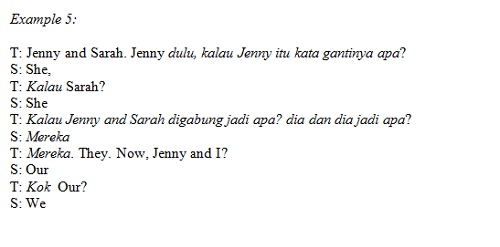
English Teacher’s Code Switching in The Classroom (A Case Study in Grade IX of SMK 10 Padang)
Abstract
Keywords
Full Text:
PDFReferences
Arifin, K., & Husin, M. S. (2011). Code-switching and Code-mixing of English and Bahasa Malaysia in Content-Based Classrooms: Frequency and Attitudes. The Linguistics Journal, 5(1), 220-247.
Bernstein, E., & Herman, A. (2014). Code Switching and Competition: An Examination of Situational Response. Journal Quest, 66(4), 409-420.
Cook, V. (2000). Second Language Learning and Language Teaching. Beijing: Foreign Language Teaching and Research Edward Arnold.
Fiki, E. (1999). Code-mixing of Arabic and English in a University Science-Teaching Context: Frequency, Grammatical Categories and Attitudes. (Unpublished thesis). Concordia University, Quebec, Canada.
Levine, G. S. (2011). Code Choice in the Language Classroom. Bristol, UK: Multilingual Matter.
Lightbown, P. M. (2001). L2 Instruction: Time to Teach. TESOL Quarterly, 35(4), 8-99.
Martiana, T. (2013). Examining Code-Switching Practices in Hilman Hariwijaya’s Makhluk Manis dalam Bis dan Bunga untuk Poppi. Journal Passage, 1(1), 9-20.
Muin, A. (2011). Code-Switching as A Communication Strategy. Journal Adabiyah, XI (2), 264-277.
Nordin, N. M., Ali, D., Zubir, S.I., & Sadjirin, R. (2013). ESL Learners’ Reaction Towards Code Switching in Classroom Settings. Procedia - Social and Behavioral Sciences, 90, 478-487.
Polio, C. G., & Duff, P. A. (1990). How Much Foreign Language Is There in The Foreign Language Classroom? The Modern Language Journal, 74(2), 154-166.
Putri, D. M., Zaim, M., & Desmawati, R. (2014). An Evaluation of Speaking Tasks in Students’ Book for Senior High School Grade X Semester 1. Journal English Language Teaching (ELT), 2(2), 56-65.
Shay, O. (2015). To Switch or Not To Switch: Code Switching in a Multilingual Country. Procedia - Social and Behavioral Sciences, 209, 462-469.
Ulya, R. H. (2018). Dimensi Keteraturan Sosial Wanita Hamil dalam Gamitan Superstisi Kubuang Tigo Baleh. Kafa’ah Journal, 8(2), 183-196.
Ulya, R. H. (2018). Reinterpretation of Ethic Value in Minangkabau’s Superstition. TELL-US Journal, 4(1), 47-57.
Ulya, R. H., Thahar, H.E., Asri, Y., & Agustina, A. (2018). Cultural Manifestation in Superstition of Minangkabau Society. In Ifdil (Ed.). Proceeding of the 1st International Conferences on Education, Social Sciences and Technology Application in Digital Era. Padang: Universitas Negeri Padang.
Wardhaugh, R. (2010). An Introduction to Sociolinguistics. Oxford: Blackwell.
Yankova, D., & Vassileva, I. (2013). Function and Mechanism of Code-Switching in Bulgarian Canadian. Etudes Canadiennes/ Canadian Studies 74, 103-121.
Yusuf, Y. Q., Fata, I. K., & Chyntia, C. (2018). Types of Indonesian-English Code-Switching Employed in A Novel. Kasetsart Journal of Social Sciences, 1-6.
DOI: http://dx.doi.org/10.31258/jes.4.3.p.620-631
Refbacks
- There are currently no refbacks.
Copyright (c) 2020 Dian Mega Putri

This work is licensed under a Creative Commons Attribution 4.0 International License.
Publisher: FKIP Universitas Riau












